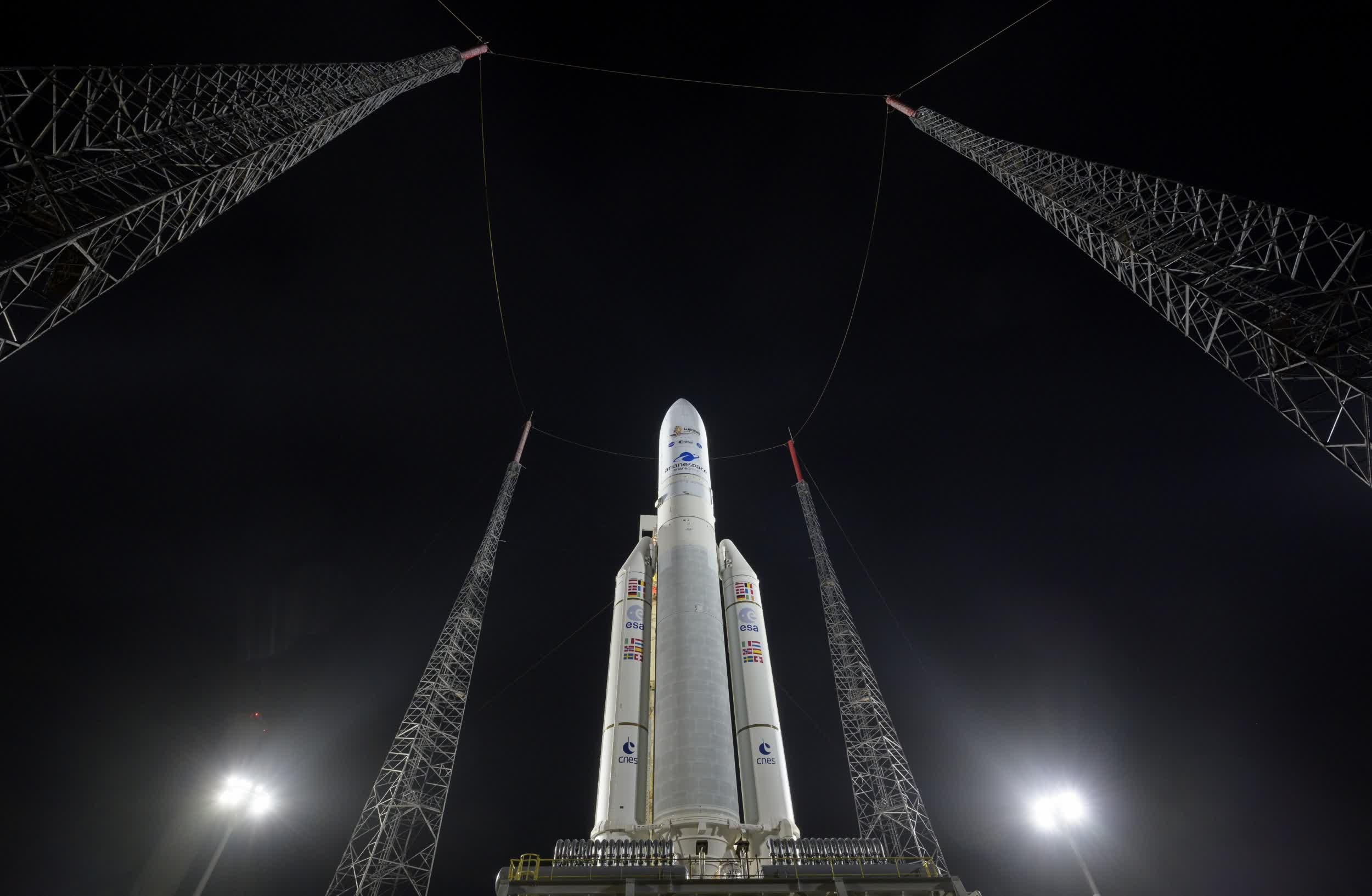In brief: The James Webb Space Telescope has finally left Earth and is en route to the L2 Lagrange point nearly a million miles from home where it'll set up shop and hopefully reward astronomers with a treasure trove of new discoveries over its 10-year mission duration.
The launch took place from Kourou, French Guiana, with the highly complex JWST hitching a ride to space via an Ariane 5 launch vehicle.
The boosters ignited and liftoff occurred at 7:20 a.m. Eastern. Moments later, the control center received telemetry from the telescope and a little more than two minutes into launch, the two solid rocket boosters separated and fell into the ocean as planned. The fairing came off next, exposing the telescope as the journey continued.

After getting Webb up to speeds of around 16,000 miles per hour, the Ariane 5 main stage engine shut down and was jettisoned. The upper stage engine was then lit and burned for 16 minutes, bringing the scope up to around 22,000 miles per hour.
At the half-hour mark, Webb's solar array was deployed and was confirmed to be functional. And with that, Webb is on its way.
NASA said the telescope is now in coast phase, and is correctly oriented with respect to the Sun. It's altitude control system has been powered on and will be responsible for keeping the craft pointing in the right direction.

Over the next week, Webb's massive sunshield will open, protecting the telescope from solar radiation and heat as it makes its way to L2.
There are still plenty of hurdles that must be overcome, but for now, astronomers and enthusiasts worldwide can finally breathe a collective sigh of relief as Webb is up and on its way. Interested parties can follow Webb's journey over on NASA's website.
